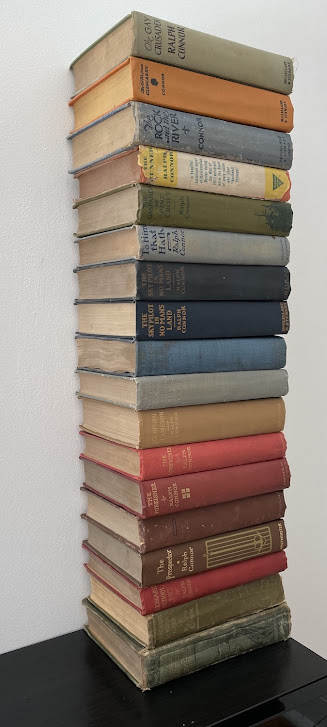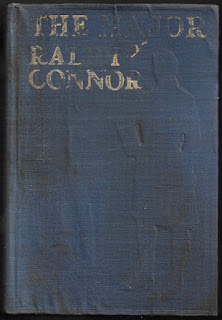Caroline
André Norton and Enid Cushing
New York: Tor, 1983
320 pages
Caroline was published in January 1983, eight months before Enid Cushing's death. Her passing was not recognized by the Montreal Gazette, her hometown's surviving English-language daily, though the family did publish an obituary in the 30 August 1983 edition.
It's no surprise that the Gazette gave Enid Cushing's death no notice; the paper paid little attention to her writing career. Not one of her murder mysteries – Murder’s No Picnic (1953), Murder Without Regret (1954), Blood on My Rug (1956), The Unexpected Corpse (1957), and The Girl Who Bought a Dream (1957) – was reviewed in its pages. The same holds true for the titles she penned in her late-in-life resurrection as a writer of historical romances: Maid-At-Arms (1981) and Caroline (1983).
My interest in Enid Cushing began with the discovery of her 'fifties Montreal mysteries, but I'm much more intrigued by her two romances. Both Maid-At-Arms and Caroline are collaborations with celebrated American science fiction writer Andre Norton (aka André Norton; née Alice Mary Norton). While I've not been able to discover how the two came to work together, I have learned that their friendship dates back to at least 1953, the year Murder's No Picnic was published.
Maid-At-Arms stands with Rosemary Aubert's Firebrand as my very favourite Canadian romance novel. Caroline is a close third.
Caroline is a well-written, well-crafted novel; the headache-inducing sentence in which Richard is introduced is an anomaly. Given Enid Cushing's awkward mystery novels, one might conclude that Norton's name deserved place of prominence, but I argue otherwise. Norton had no connection with Canada, never mind Montreal – and Caroline is very much a Montreal novel. The action takes place over little more than twelve months in the city's history. Beginning in January 1847 with Lord Elgin's arrival, it incorporates the Summer of Sorrow and the opening of the Montreal & Lachine Railroad, ending in the early months of 1948. Throughout it all, I kept an eye out for historical inaccuracies, yet spotted nothing. I doubt credit goes to Norton, just as I doubt Norton, a science fiction novelist from Cleveland, Ohio, came up with the idea of a historical romance set in mid-nineteenth-century Canada. It's unlikely Caroline will ever be reprinted, but if it is, let's give Enid Cushing equal billing.
 |
| Adolphus Bourne, Map of the City of Montreal, 1843 (detail) |
Object and Access: A decaying mass market paperback. The cover illustration is by New Brunswicker Norm Eastman, best known for men's magazine covers like this:
 |
| New Man, October 1968 |
I purchased my copy last year for US$5.79 from an Ohio bookseller.
As far as I can tell, not one Canadian library holds a copy.

































